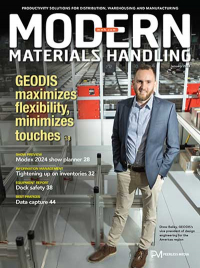Retail distribution closes in on the customer
Form factors continue to evolve as retailers look for the right mix for meeting consumer expectations from the DC to the store.
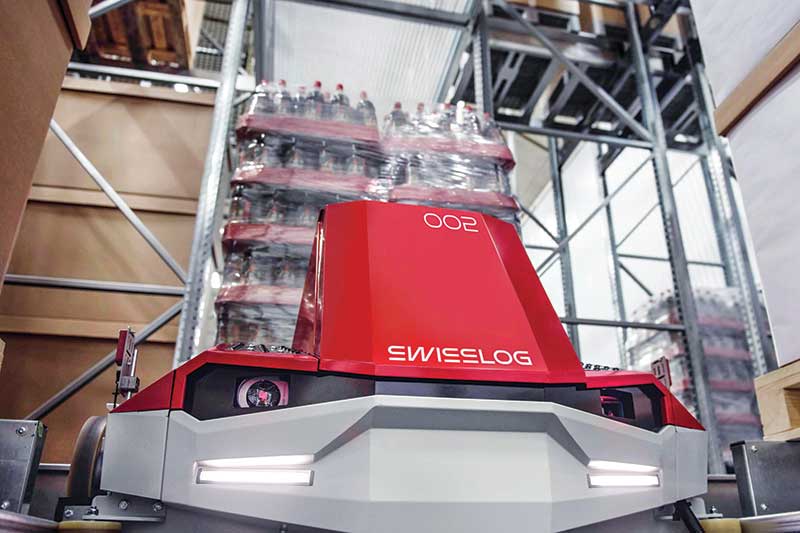
Here’s a question about shopping that’s probably out on social media some place: Is shopping a chore or a leisure activity? Oh, boy. That should get the conversation going.
Whichever side you come down on, rest assured retailers are going out of their way to err on the side of leisure.
“This is a complicated problem to solve,” says Sean Wallingford, president and CEO of Swisslog Americas. “Agile fulfillment is a challenge,” he adds in classic understatement.
For instance, a recent emphasis on national DCs has morphed into an emphasis on many regional DCs, or even local DCs. One variation is called micro-fulfillment with the DC, often highly automated, in the back of each store.
Then there’s the matter of fulfilling online orders from anywhere in the country from, for instance, a Madewell store in Hingham, Mass.
As if that’s not enough, has anyone heard of retail sortation centers for online orders? Target has and is putting $100 million into them.
What about small-format, digital-first stores? Best Buy is giving it a try in North Carolina.
Customer satisfaction in retail distribution is all about getting closer to the customer. But there’s more to it.
The top three factors fueling shopper satisfaction is the same in stores and online, says Matthew Guiste, Zebra’s global retail strategist. They are: variety and product selection; ease of finding the correct prices; and ease of locating products. That’s according to Zebra’s recently released global shopper study.
In addition, retail distribution success and failure is no longer solely sourced from inside the four walls of a DC or couple of DCs. For those retailers with brick-and-mortar stores, their storefronts are just as important to connecting product with the consumer. This is now a full-bore team effort.
Large DCs now rarely fulfill the needs of every store or every online order. That model is just too linear. And retail distribution is anything but linear these days.
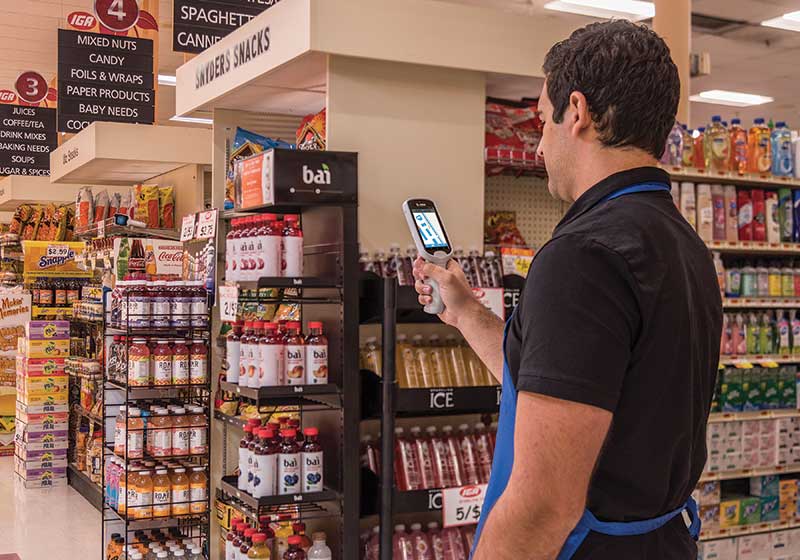
Those big DCs worked in the early days of omnichannel (the retailer managing multiple inventory streams across multiple channels in both directions for ease of consumer shopping and returns). Or, as Omer Rashid, vice president of operations development at DHL, puts it: anywhere, any time.
While how omnichannel looks and operates has changed, anywhere, any time has not.
The ultimate goal is still the same: Make shopping simple so it can be a great leisure activity for consumers. But how retailers meet consumer expectations is neither as simple nor as universal as it once was.
Here’s what some of those changes look like.
Start with the consumer
Before we get ahead of ourselves, it’s important to note that large, national omnichannel DCs are still very mainstream.
“Retailers are still building large omnichannel DCs,” explains Kim Baudry, Dematic’s global market development director. “However, regional and local DCs are coming on, but are still in the early stages,” she adds.
When asked how they differ in size and range, Baudry puts it this way: “National DCs are often 750,000 to 1 million square feet and service stores up to 2,000 miles distant. Regional DCs are typically 200 to 400,000 square feet and service stores 100 to 500 miles away. And local DCs are smaller than 200,000 square feet with a 15-mile radius.”
While this build out may not be occurring across retail at Amazonian speed, retailers are, no doubt, mimicking what the e-commerce giant has done in the past two years.
Swisslog’s Wallingford says roughly 20% of retailers are leaders. And he estimates that those leaders are about 50% of the way along this shift. The other 80% of retailers are closer to the earliest stages.
In every case, the shift is motivated by the need to get inventory as close to the customer as possible. But other important shifts in consumer desires are at play bringing on changes in order fulfillment. Here are a couple of examples that have an impact on how a DC operates.
“Consumers are quite interested in different products from known brands and personalization for each item,” says Diana Mueller, account executive at FORTNA.
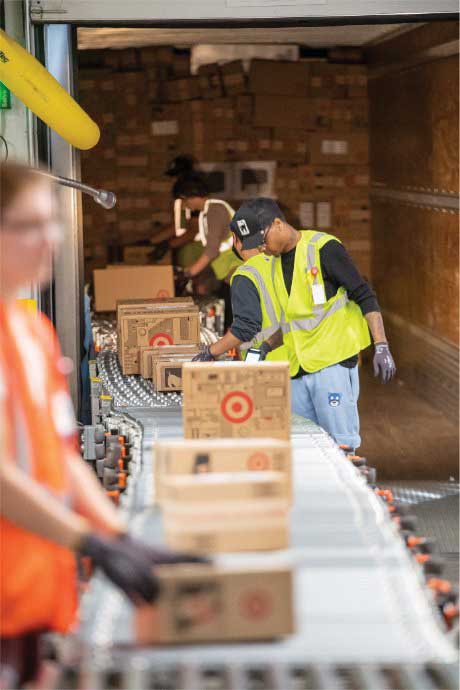
One example of more different products is the move by retailer Kendra Scott to add fragrances to its established jewelry business, explains Mueller. TEMU, which makes nothing itself, connects consumers with increasing numbers of third-party suppliers. Another twist here is Sephora mini-stores in a Kohl’s and CVS mini-stores in a Target.
All are the same idea, but a different approach to offering more different products under an established brand.
There’s also the matter of special features, says Mueller. Think personalization from monogramming to special features. For each of these broad trends, the shift in consumer demand has a direct impact on how retail distribution works. Details in a minute.
Clearly, retail isn’t getting any easier. And we haven’t even touched on third-party logistics (3PLs) providers such as DHL. This approach is for retailers that want to outsource distribution activities.
Rashid says his company has 450 DC sites across the country ranging in size from 50,000 square feet to 2 million. The vast majority of the DCs manage and distribute inventory for a single client only.
Making retail distribution work
We’re now about half way through this article, and it’s time to introduce the single greatest challenge to retailer success at meeting consumer desires: Labor.
No surprise there. But it did have to be said.
Best Buy and Target were mentioned for their innovative approaches to optimizing retail inventory flow.
Target is investing $100 million in 15 sortation facilities around the country by 2026. Several of those centers already up and running receive local, pre-sorted packages and stages them for pickup by delivery drivers on the Shipt platform.
The centers doubled their volume this year to more than 50 million packages. Throughput is 150% greater than possible previously.
Meanwhile, Best Buy has opened in Charlotte, N.C., a 5,000-square-foot store with a curated display of electronics and other items.
To purchase an item, customers scan the desired item’s tag. Transmitted to a back room with actual inventory, the data guides an order picker who brings the item to the register. If this sounds a lot like long-ago Service Merchandise, you have the right idea.
It doesn’t take much to see that one size no longer fits retail distribution. Sean Wallingford, president and CEO of Swisslog Americas, says to expect still more changes as retailers develop multiple solutions to customer desires that can change in the blink of an eye.
Both unskilled labor and a lack of labor often get in the way of responsive retail distribution. As Rashid is quick to point out, DHL has 40,000 warehouse associates on staff. He didn’t say finding that much labor was easy, but DHL did it.
The challenge is to match labor availability and skill with technology from goods-to-person systems to wireless scan guns.
As it turns out, automation also addresses the other top needs of DCs, says Dematic’s Baudry. These are:
- order fulfillment speed,
- flexibility,
- accuracy, and
- better space utilization in the DC.
Making these happen is a direct result of inventory visibility, says Zebra’s warehouse transport and logistics strategist Andre Luecht. And the ultimate goal is to optimize work flow, he adds.
As FORTNA’s Mueller explains, “technology simplifies activities and tasks in the DC. The trick is to get the technology to do the work for you.”
Her example is a goods-to-person system that eliminates the need for a person to find inventory by walking to it. Instead, an autonomous mobile robot (AMR) picks up a shelf of inventory and brings it to the associate. It’s much the same idea as a multi-aisle shuttle system that uses dedicated robots to retrieve items and bring them to a stationary order picker.
Scalable, flexible robotic solutions are critical going forward, says DHL’s Rashid. “We can’t predict consumer behavior. But, we can build DCs with the flexibility to adapt to peak seasons and changes in inventory and inventory mix. Robotic technology makes it all possible.”
Luecht of Zebra talks about combining technologies such as scanning capabilities and an RFID module on the same device to simplify data capture and item verification steps.
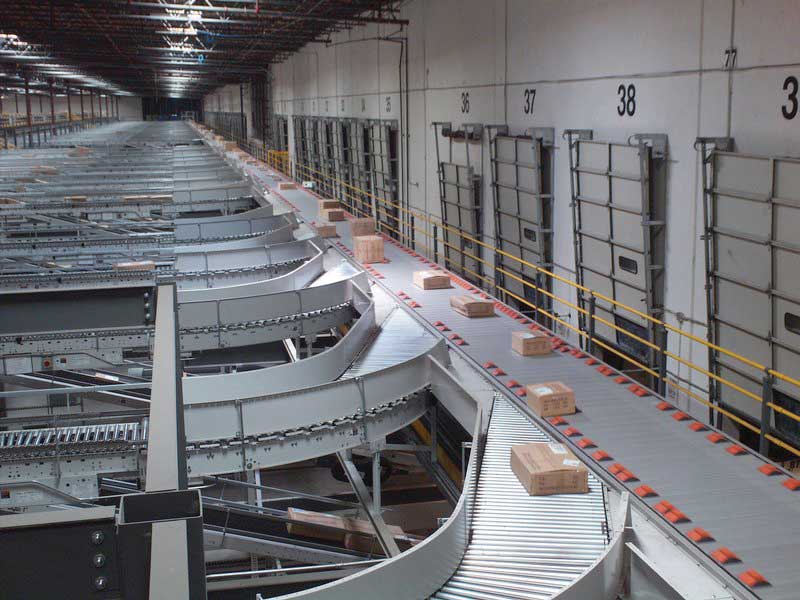
Going back to the discussion on personalization, technology is key to optimizing two rather disjointed work flows, says Mueller.
For instance, an item that needs a monogram can be picked along with other items for the same order by a grid-based automated storage and retrieval system (AS/RS).
The items that need monograms are routed to the personalization area while the others proceed directly to a pick wall. When personalization is completed, the items travel in a tote along a conveyor or sorter to that same pick wall where the two parts of the order are married for shipment.
However, not everything in retail DCs is automated.
Crown’s Jared Green talks about lift trucks and software that together better manage orders, pick efficiency and order accuracy. Green, director of global sales for automation and emerging technologies, says software or services that optimize warehouse layouts for order picking through the expansion of pick faces, slotting and order management can streamline access to pick locations.
One of the more notable collaborations between the DC and stores is the bin and tote recycling loop between the two, explains Ken Beckerman, president of Flexcon. Bins and totes built for this continuous loop can make 50 trips before being recycled themselves, creating another form of optimization in retail distribution.
Mueller does leave us with a final thought on the labor and automation equation. “A good starting place is to determine how many orders a DC should be able to handle in a day. The drill down is the level of automation needed to support that along with a workforce that flexes with seasonal demand. And some of the workforce is at stores, not just in the DC,” she says.
By the way, Rashid says DHL’s approach to the technology required is based on a shared investment with the client. “It’s a matter of developing solutions that orchestrate multiple use cases depending on many variables in the DC.”

Article Topics
Crown Equipment News & Resources
Pan Pacific Pet’s new distribution center: Building operations around automated order fulfillment Retail distribution closes in on the customer Conventional warehousing update Top 20 lift truck suppliers 2023 NA and VNA trucks: Jumping on the narrow aisle trend Autonomous lift trucks emerge Sensors give lift truck safety a boost More Crown EquipmentLatest in Materials Handling
Geek+ and System Teknik deploy PopPick solution for pharmacy group Med24.dk Beckhoff USA opens new office in Austin, Texas Manhattan Associates selects TeamViewer as partner for warehouse vision picking ASME Foundation wins grant for technical workforce development The (Not So) Secret Weapons: How Key Cabinets and Asset Management Lockers Are Changing Supply Chain Operations MODEX C-Suite Interview with Harold Vanasse: The perfect blend of automation and sustainability Consultant and industry leader John M. Hill passes on at age 86 More Materials HandlingAbout the Author
Subscribe to Materials Handling Magazine

Find out what the world's most innovative companies are doing to improve productivity in their plants and distribution centers.
Start your FREE subscription today.
April 2024 Modern Materials Handling

Latest Resources


